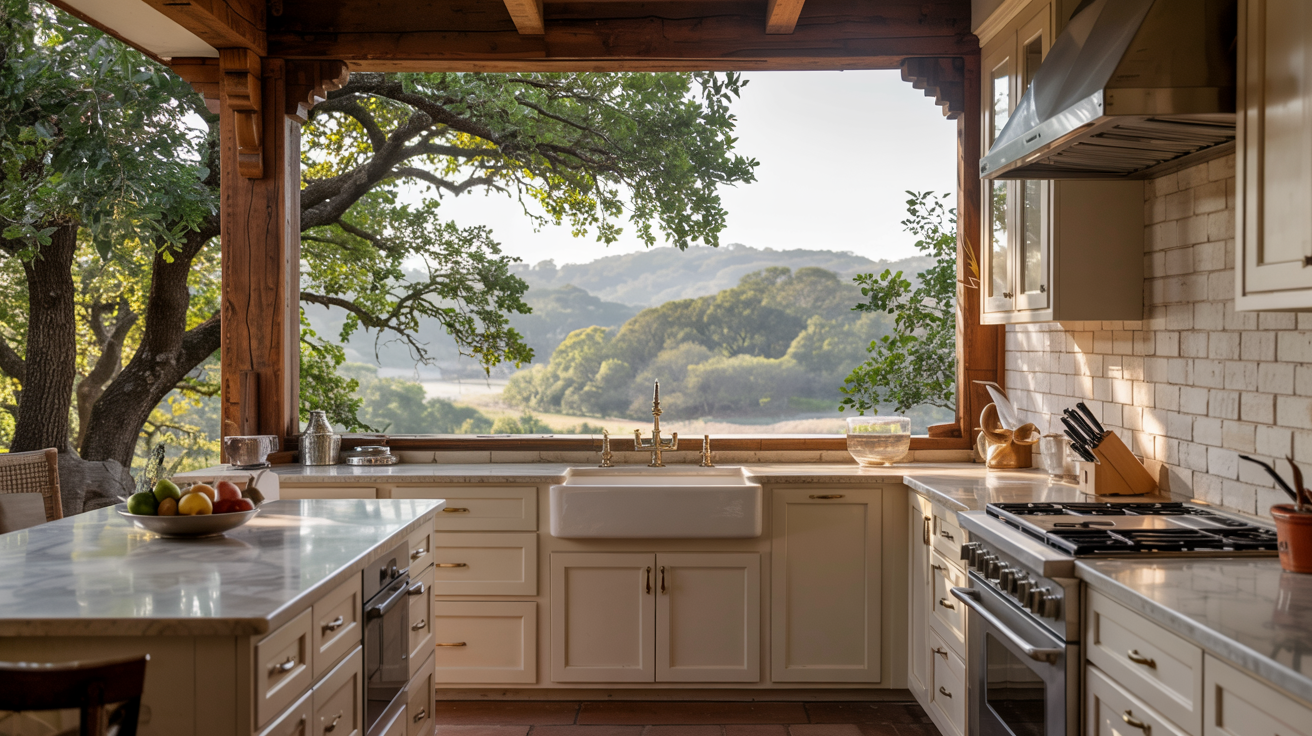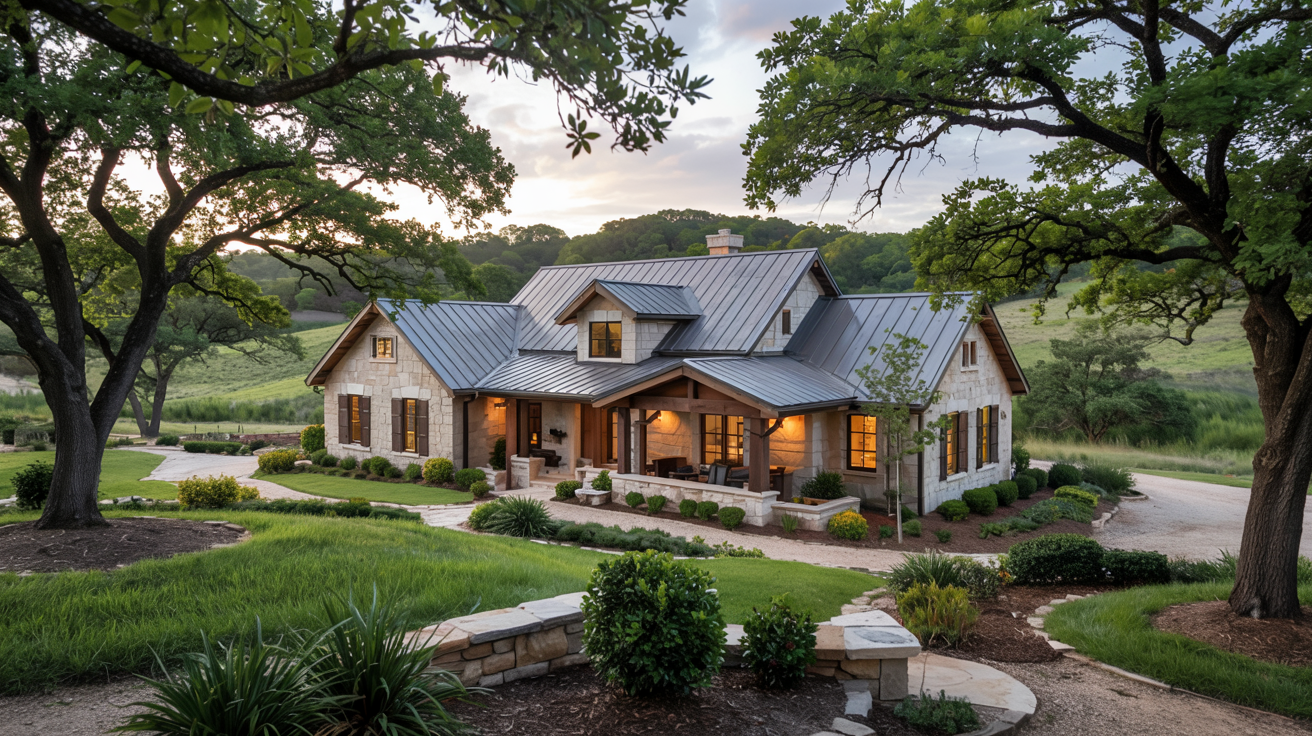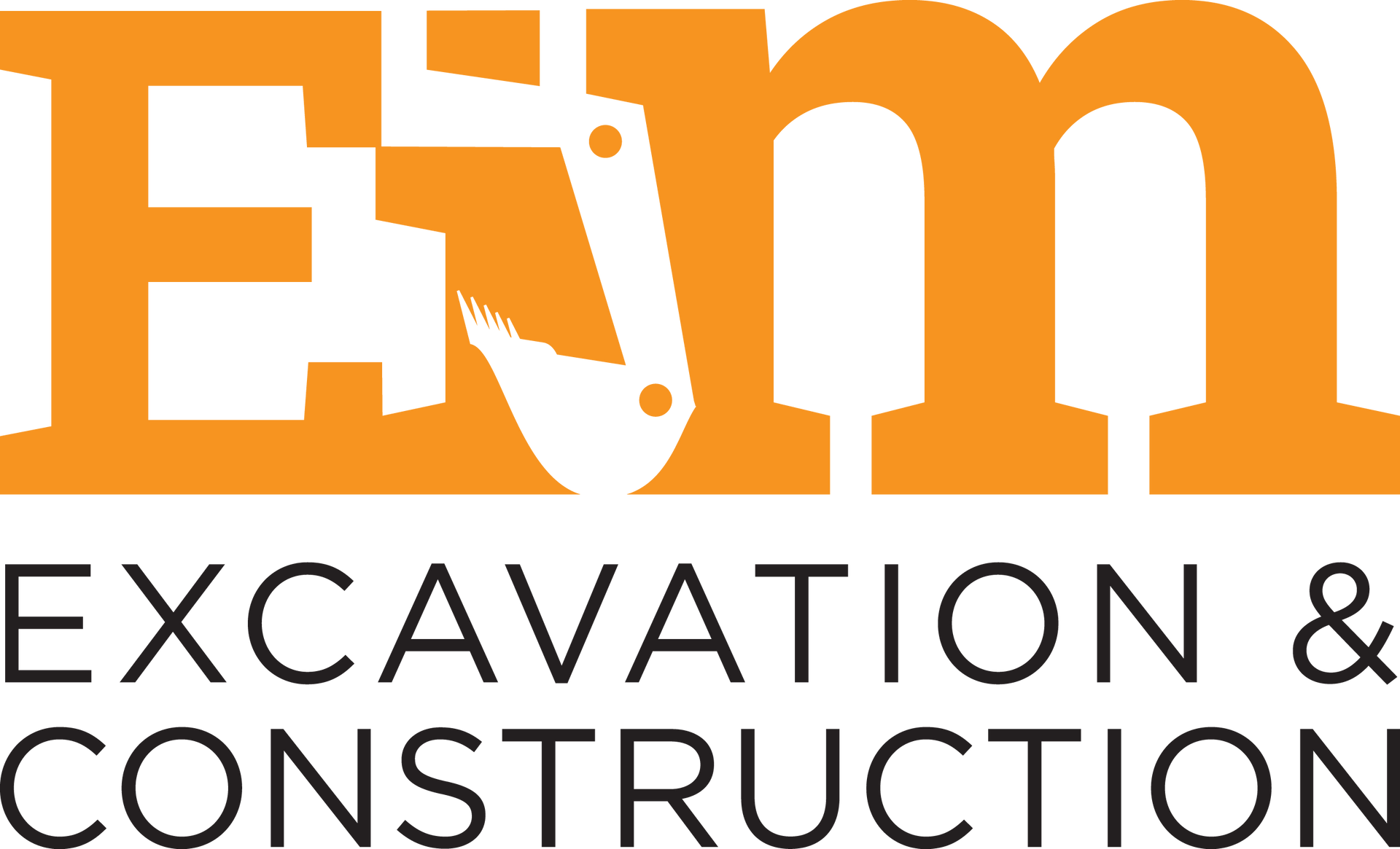Complete Backyard Landscaping Guide for Texas Homes
Transform Your Property: The Complete Guide to Backyard Landscaping Solutions
After two decades in construction and founding Earth in Motion in 2005, I've learned that successful backyard landscaping starts with understanding your unique environment and your family's actual needs. Too many homeowners jump into projects without considering how their soil drains, which direction their yard faces, or whether they really want to spend every weekend maintaining a high-maintenance garden. Let me walk you through the practical approach we've developed working on properties from the rocky terrain of Colorado to the clay soils here in Austin, Texas.
Your backyard should work as hard as you do. It needs to handle everything from kids' birthday parties to quiet morning coffee breaks, while looking great year-round without breaking your budget on water bills or weekend maintenance. The key is creating a balanced design that combines solid structural elements with smart plant choices that actually thrive in your specific conditions.
Building the Foundation: Strategic Hardscaping for Texas Conditions
When I first started Earth in Motion, I made the mistake of thinking hardscaping was just about making things look pretty. After years of callbacks for shifting patios and cracking walkways, I learned that your hardscape elements need to work with your soil and climate, not against them.
Here in Austin, we deal with expansive clay soils that can shift dramatically between our wet springs and dry summers. This means your patio, walkways, and retaining walls need proper foundation work and drainage considerations that many homeowners overlook. I've seen too many weekend DIY projects turn into expensive repairs because the underlying soil movement wasn't addressed.
Essential Structural Elements That Actually Last
Your hardscape serves as the backbone of your entire landscape design. These permanent features should be installed once and forgotten about, not constantly repaired. Here's what we focus on:
- Patios and entertainment areas: These need proper base preparation and drainage to prevent settling and cracking
- Walkways and pathways: More than just getting from point A to B, they define your landscape zones and direct foot traffic
- Retaining walls: Critical for managing slope issues and creating usable flat spaces in challenging terrain
- Fire features: Increasingly popular for extending outdoor use into cooler months
- Water features: My personal passion - custom ponds that become the focal point of your landscape
The biggest factor driving your hardscape investment is the amount of site preparation required. A level lot with good drainage will cost significantly less than a sloped property that needs extensive grading and drainage solutions. Material choices also impact your budget - natural stone costs more upfront but often lasts longer than manufactured alternatives in our Texas climate.
Material Selection for Long-Term Success
I've worked with every material you can imagine, from Colorado flagstone to Texas limestone. The key is matching your material choice to your specific conditions and maintenance preferences. Natural stone typically requires less replacement over time but costs more initially. Manufactured materials can offer more color and size consistency but may need replacement sooner in extreme weather conditions.
For Austin homeowners, I often recommend limestone or other local stone options because they handle our temperature swings well and blend naturally with the Central Texas landscape. The transportation costs are lower, and these materials have proven themselves over decades of use in our climate.
Smart Plant Selection: Working With Nature, Not Against It
This is where I see the biggest mistakes in backyard landscaping projects. Homeowners fall in love with plants they see in magazines or at the garden center without considering whether those plants will actually thrive in their specific yard conditions. Your plant selections should be based on your soil type, sun exposure, water availability, and honest assessment of how much maintenance you want to do.
In my experience, the most successful landscapes use plants that want to grow in your specific conditions. Fighting your natural environment with constant watering, fertilizing, and replacing plants that aren't suited to your area is expensive and frustrating.
Climate-Appropriate Plant Strategies
Central Texas presents unique challenges with our hot summers, occasional freezes, and unpredictable rainfall patterns. The plants that thrive here are typically drought-tolerant once established, can handle temperature extremes, and don't require constant attention.
Native and adapted plants form the backbone of our most successful projects. These include:
- Native trees: Live oaks, cedar elms, and Texas red oaks that provide long-term shade and structure
- Drought-tolerant shrubs: Agarito, flameleaf sumac, and cenizo that add color without constant watering
- Perennial flowers: Turk's cap, autumn sage, and Mexican buckeye that return year after year
- Groundcover alternatives: Buffalo grass or native bunch grasses that need less water than traditional turf
The key is creating plant zones based on water needs and sun exposure. Your high-water plants should be grouped together near water sources, while drought-tolerant plants can fill in areas that are harder to irrigate.
Functional Zoning for Different Activities
Your landscape should have designated areas for different activities, just like rooms in your house. We typically create zones for:
- Active areas for kids and pets with durable surfaces and easy-care plants
- Entertainment spaces with comfortable seating and evening lighting
- Private retreat areas with screening plants and comfortable seating
- Utility areas for storage and maintenance access
- Garden areas for homeowners who enjoy hands-on plant care
Each zone can have different plant palettes and maintenance requirements based on how you actually use that space.
Water-Smart Design: Conservation Without Compromise
Water conservation isn't just about environmental responsibility - it's about creating landscapes that can survive our unpredictable Texas weather patterns without constant intervention. I've seen too many beautiful landscapes fail during drought periods because they weren't designed for water efficiency.
The most effective water-smart designs use a combination of drought-tolerant plants, efficient irrigation systems, and landscape features that capture and redirect natural rainfall. This approach reduces your water bills while creating more resilient landscapes.
Efficient Irrigation and Water Management
Modern irrigation systems can reduce water usage by 30-50% compared to traditional sprinkler systems when properly designed and maintained. The key is matching your irrigation method to your plant needs and soil conditions.
Drip irrigation works well for shrubs and garden areas, while efficient spray heads can handle larger turf areas. Smart controllers that adjust watering based on weather conditions and soil moisture can further reduce water waste.
But irrigation is only part of water management. We also focus on:
- Soil improvement: Adding organic matter to help clay soils drain better and sandy soils retain moisture
- Mulching: Reducing evaporation and moderating soil temperatures
- Grading and drainage: Directing rainwater where you want it instead of losing it to runoff
- Rain collection: Simple systems that capture roof runoff for landscape use
Low-Maintenance Design Principles
The best landscapes are designed to need less intervention over time, not more. This means selecting plants that won't outgrow their spaces, using materials that age well, and creating systems that work automatically.
Some key strategies include:
- Right-sizing plants for their eventual mature size
- Using mulch and groundcover to suppress weeds
- Installing automatic irrigation systems with weather sensors
- Choosing disease-resistant plant varieties
- Creating defined edges that prevent grass from invading planted areas
Your maintenance requirements should actually decrease over the first few years as plants establish and systems mature, not increase.
Solving Common Backyard Challenges
Every property has its unique challenges, but I've encountered the same basic problems hundreds of times across different projects. Poor drainage, sloped terrain, compacted soil, and awkward layouts can all be solved with the right approach and experience.
The key is identifying these challenges early in the planning process and designing solutions that address root causes, not just symptoms.
Drainage and Slope Management
Poor drainage is the number one killer of landscapes in Central Texas. Our clay soils can hold water on the surface for days after heavy rains, creating soggy conditions that kill plants and make yards unusable.
Effective drainage solutions include:
- French drains: Underground systems that move water away from problem areas
- Surface grading: Subtle slope adjustments that direct water flow
- Rain gardens: Planted depressions that capture and slowly release runoff
- Permeable paving: Walkways and patios that allow water infiltration
For sloped properties, we often create terraced areas using retaining walls or natural berms. This creates usable flat spaces while preventing erosion and managing water flow.
Small Space Solutions and Vertical Growing
Urban Austin lots are getting smaller, but that doesn't mean your landscape options are limited. Small spaces actually benefit from more intensive design because every square foot needs to work harder.
Effective small space strategies include:
- Vertical growing using walls, trellises, and hanging systems
- Multi-functional features like seating walls with built-in planters
- Container gardens that can be moved and reconfigured
- Mirrors and lighting to create the illusion of more space
- Careful plant selection to maximize seasonal interest
The key is creating distinct zones even in small spaces, so your backyard feels like multiple outdoor rooms rather than one cramped area.
Planning Your Investment: Understanding What Drives Costs
After nearly two decades of construction projects, I can tell you that the biggest factor driving your landscape investment isn't the materials or plants - it's the site conditions and project complexity. A simple design on a level, well-draining lot will cost significantly less than a complex project requiring extensive grading, drainage work, or access challenges.
The most cost-effective projects are those where homeowners have realistic expectations about what they want to achieve and understand the factors that drive complexity.
Factors That Impact Your Project Investment
Several key factors determine your final project cost:
- Site preparation requirements: Grading, drainage, and soil improvement needs
- Access challenges: Narrow gates, steep slopes, or limited equipment access
- Material choices: Natural stone vs. manufactured, local vs. imported materials
- Project complexity: Simple designs vs. multiple zones with different features
- Infrastructure requirements: Electrical, plumbing, or structural work needed
- Timeline constraints: Rush projects or specific completion deadlines
The smartest homeowners start with a master plan that can be implemented in phases over time. This allows you to spread costs across multiple years while ensuring each phase works together toward your overall vision.
Professional Installation vs. DIY Considerations
I respect homeowners who want to tackle projects themselves, but certain aspects of backyard landscaping require professional expertise and equipment. Structural work, irrigation systems, and major grading should generally be handled by experienced contractors who understand local codes and soil conditions.
DIY projects work best for:
- Plant installation in prepared beds
- Mulching and basic maintenance
- Simple decorative features
- Container gardens and small raised beds
Professional installation makes sense for:
- Hardscape elements requiring excavation
- Irrigation system design and installation
- Drainage solutions and grading work
- Large tree installation and complex plantings
- Water features and electrical work
The key is being honest about your skills, available time, and the tools required for each aspect of your project.
Making Your Vision Reality: The Earth in Motion Approach
Every successful landscape starts with understanding how you actually want to use your outdoor space and what challenges your specific property presents. We've developed a systematic approach that addresses these factors upfront, preventing costly surprises and ensuring your finished landscape meets your real needs.
Our process begins with a thorough site evaluation that considers soil conditions, drainage patterns, sun exposure, existing vegetation, and access requirements. We then work with you to develop a master plan that can be implemented all at once or in logical phases over time.
The goal is creating outdoor spaces that become a natural extension of your home - places where your family actually wants to spend time throughout the year. Whether that's a custom pond that becomes your backyard focal point, entertainment areas designed for your specific needs, or low-maintenance landscapes that look great without constant attention.
Your property is unique, and your landscape should reflect that. After twenty years of solving construction challenges across different climates and conditions, I've learned that the best solutions come from understanding your specific situation and designing accordingly. That's what makes each backyard landscaping project we complete both functional and truly personal.
Frequently Asked Questions About Backyard Landscaping
What factors determine the cost of my backyard landscaping project?
After two decades in construction, I've found that site conditions drive costs more than anything else. Projects requiring extensive grading, drainage solutions, or difficult equipment access will require a larger investment than simple installations on level, well-draining lots. Material choices also impact your budget - natural stone costs more upfront but often lasts longer than manufactured alternatives in our Texas climate. Project complexity, from simple plant installations to multi-zone designs with water features and custom hardscaping, significantly influences the final investment. At Earth in Motion, we develop master plans that can be implemented in phases, allowing you to spread costs over time while ensuring each phase works toward your overall vision.
How do I choose the right plants for my Austin property?
Plant selection should be based on your specific soil type, sun exposure, water availability, and honest assessment of maintenance preferences. In Central Texas, I focus on native and adapted plants that thrive in our hot summers, occasional freezes, and unpredictable rainfall patterns. Live oaks, cedar elms, agarito, cenizo, and autumn sage form the backbone of our most successful projects because they want to grow in our conditions. The key is creating plant zones based on water needs - grouping high-water plants near irrigation sources while using drought-tolerant species in areas that are harder to water. Fighting your natural environment with plants that require constant intervention is expensive and frustrating.
What can you do about poor drainage in my yard?
Poor drainage is the number one landscape killer in Central Texas due to our expansive clay soils. At Earth in Motion, we solve drainage problems through comprehensive solutions including French drains that move water away from problem areas, surface grading adjustments that direct water flow, and rain gardens that capture and slowly release runoff. For properties with standing water issues, we often install underground drainage systems combined with soil amendments and proper grading. The key is addressing root causes, not just symptoms - which is why we start every project with a thorough site evaluation of existing drainage patterns and soil conditions.
Should I install hardscaping before or after planting?
Hardscaping should always be installed first because it requires heavy equipment and extensive excavation that would damage existing plantings. At Earth in Motion, we follow a systematic approach: site preparation and drainage solutions first, then permanent structures like patios, walkways, and retaining walls, followed by irrigation installation, and finally plant installation and mulching. This sequence prevents damage to completed work and ensures proper integration between all landscape elements. Trying to add major hardscaping features after plants are established typically results in damage and additional costs for plant replacement.
How do you create low-maintenance landscapes that still look great?
Low-maintenance design starts with selecting plants that won't outgrow their spaces and using materials that age well without constant attention. We focus on right-sizing plants for their mature dimensions, using mulch and groundcover to suppress weeds, and installing automatic irrigation systems with weather sensors. Disease-resistant plant varieties and defined edges that prevent grass invasion reduce ongoing maintenance requirements. The goal is creating landscapes where maintenance needs decrease over the first few years as plants establish and systems mature. After twenty years of projects, I've learned that the best landscapes work automatically - looking great year-round without breaking your budget on water bills or weekend maintenance.



